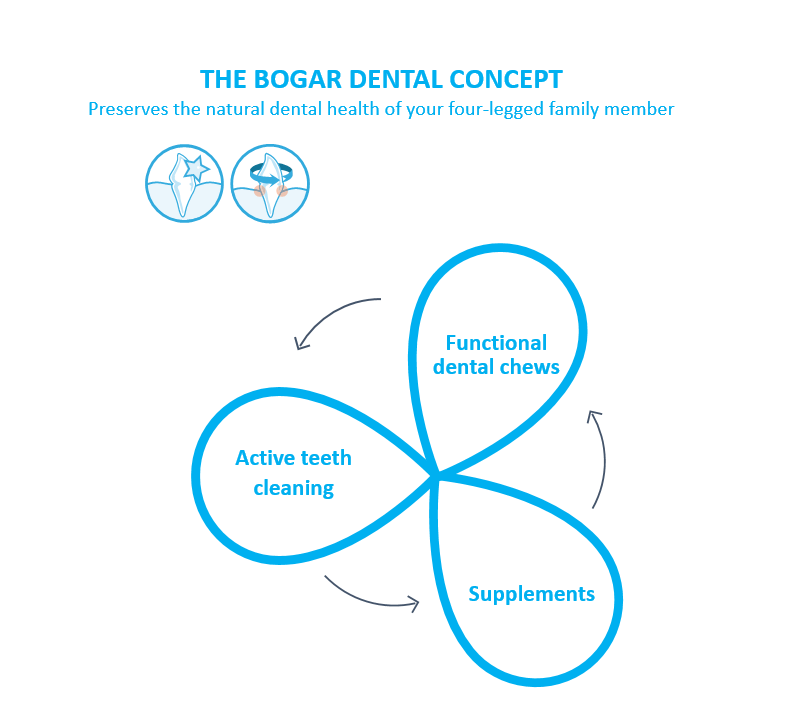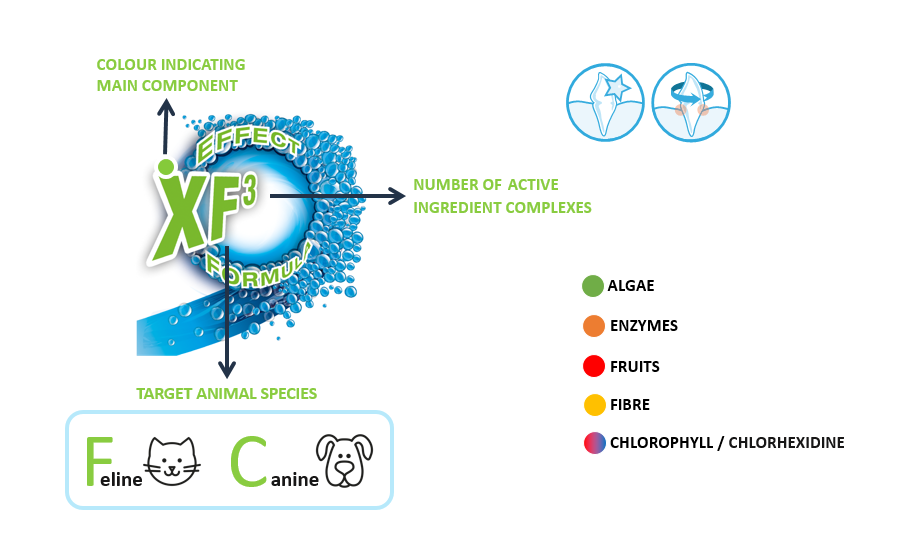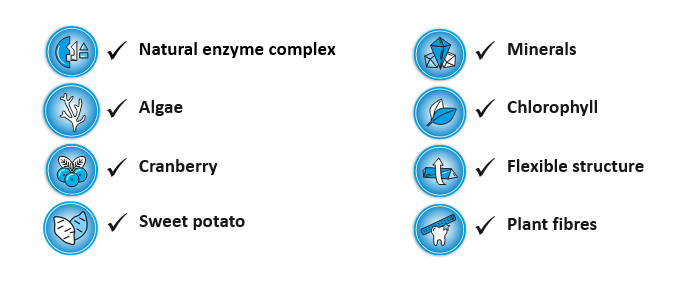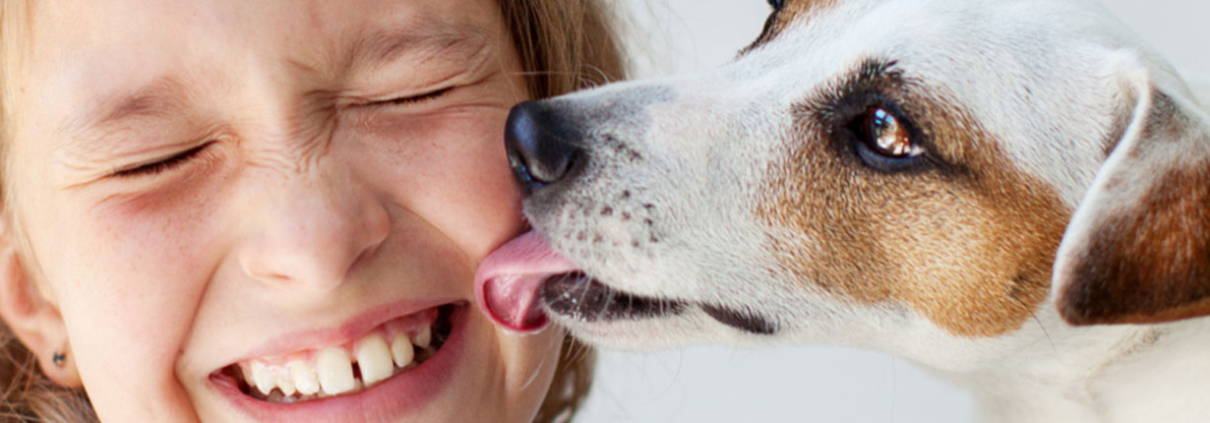
- Display 15 Products per page

Clean teeth are vital for dogs and cats. Oral hygiene is the foundation for your pet’s overall health and quality of life, just as it is for humans. Despite this, tooth and gum disease are still realities for your pet. This is shown by scientific studies:
“80% of dogs and 70% of cats show signs of periodontal disease by the age of 3”
Tooth and gum disease are often the main reason to seek veterinary advice. Depending on the overall dental condition, dental cleaning under general anaesthesia may be required.
What causes tartar to form is called plaque. This is a biofilm, which is built up from food residues, bacteria and their metabolites and which accumulates on the tooth surface. If plaque is not removed regularly, it hardens through the minerals contained in saliva and becomes tartar. This leads to inflammation and receding gums, exposure of the tooth neck and damage to the periodontium – periodontal disease.
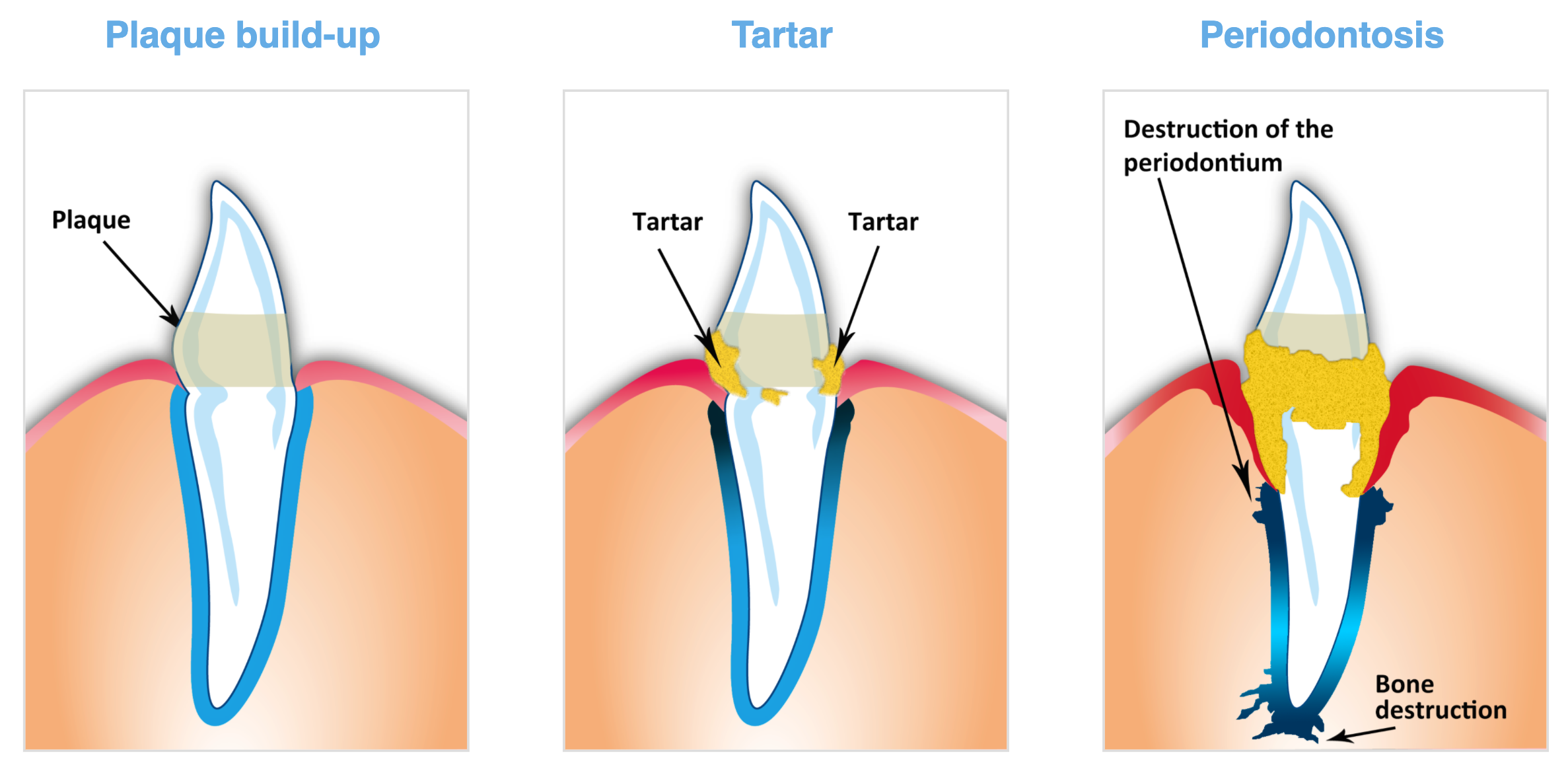
The progression of inflammation causes bone deterioration (osteolysis), tooth loosening and eventually tooth loss. These pathologic changes are extremely painful for your dog or cat. They affect your pet’s quality of life and can lead to severe behavioural problems.
Bad breath is often the first sign of dental disease, although this can also be caused by diet. If your pet has still bad breath after a diet change, gum inflammation is often the cause. Check your pet’s teeth regularly by gently lifting the lips. Plaque and tartar accumulate more on the back molars and the canines. If the gum line is red and bleeds, it very likely means that the inflammation is advanced and it is highly recommended to seek veterinary advice.
Active dental cleaning is the most important foundation for your pet’s dental health, just as it is for us. The best way to clean your pet’s teeth thoroughly and efficiently is by using a toothbrush or finger cap and a special toothpaste for dogs or cats. The additional use of functional dental chews and feed supplements can also support dental hygiene.
Get your dog or cat used to it as a puppy or kitten. Brushing your puppy’s teeth between the ages of 8 and 16 weeks is ideal. Playfully and gently accustom your puppy or kitten to manipulation in the mouth. In the case of adult dogs and cats, gradually get them used to the new routine in a playful way. Dental hygiene should become a daily ritual, which is fun for your pet and for which it is rewarded, for example, with some tasty treats, plenty of playtimes or by going for a walk.
Together with veterinarians and dentists, we, at Bogar AG in Wallisellen, Switzerland, have developed a holistic approach to dental hygiene products for dogs and cats. The central point to these high-quality and innovative products is to offer different dental solutions for your pet, since every dog and cat is unique.
